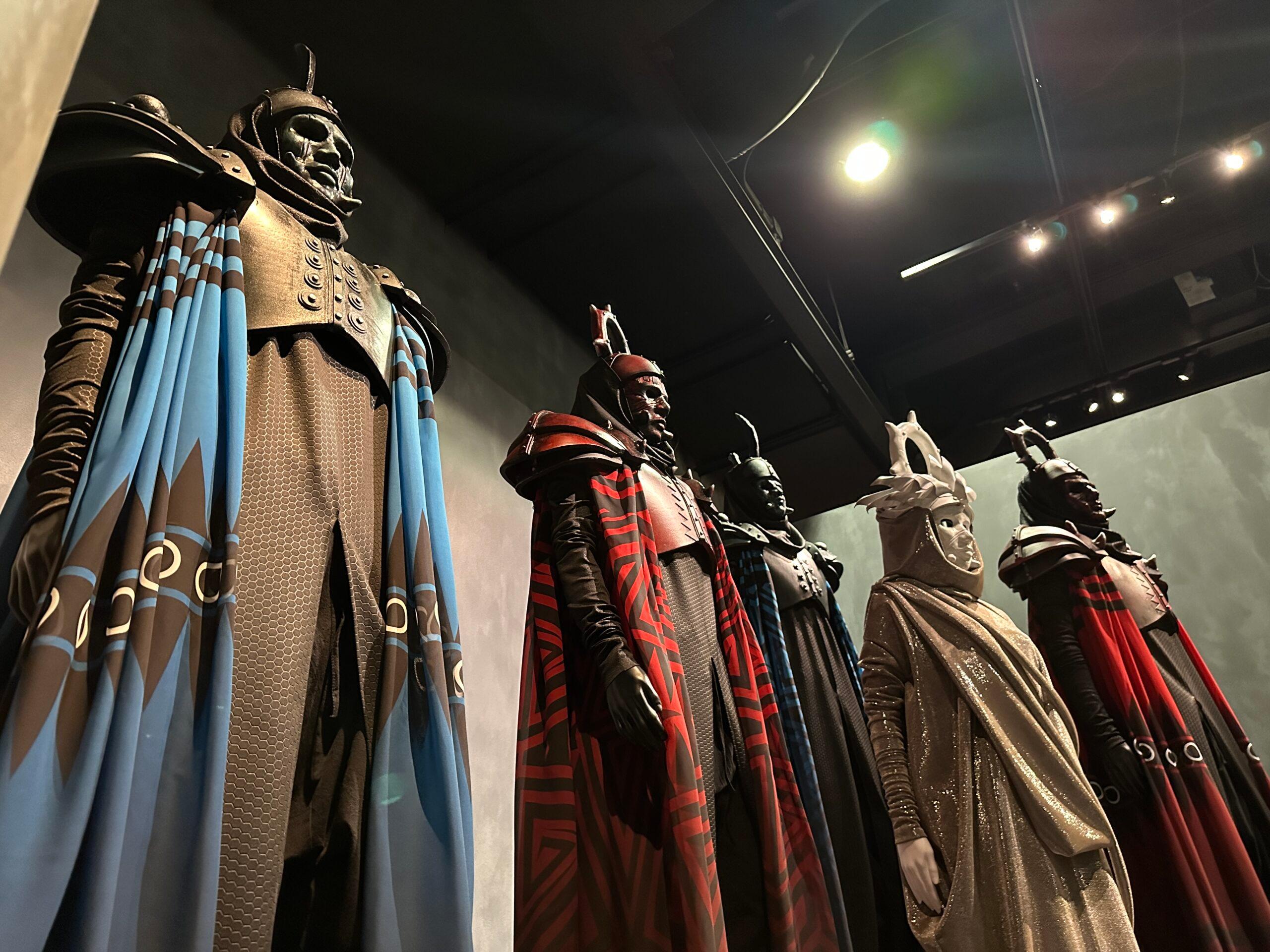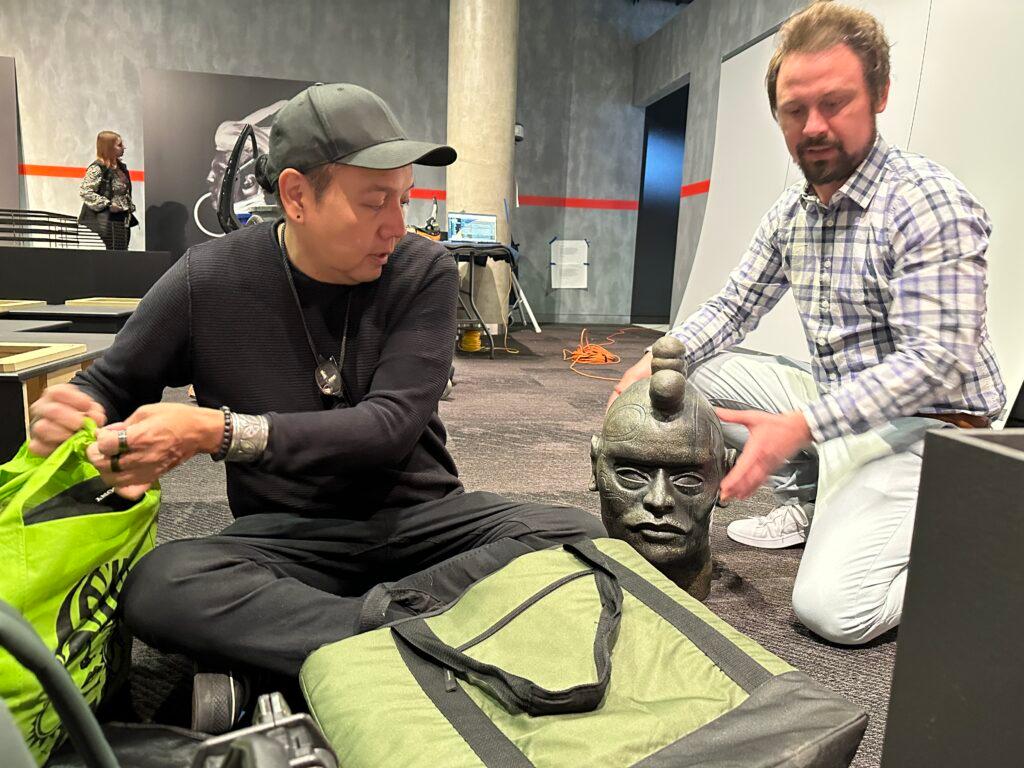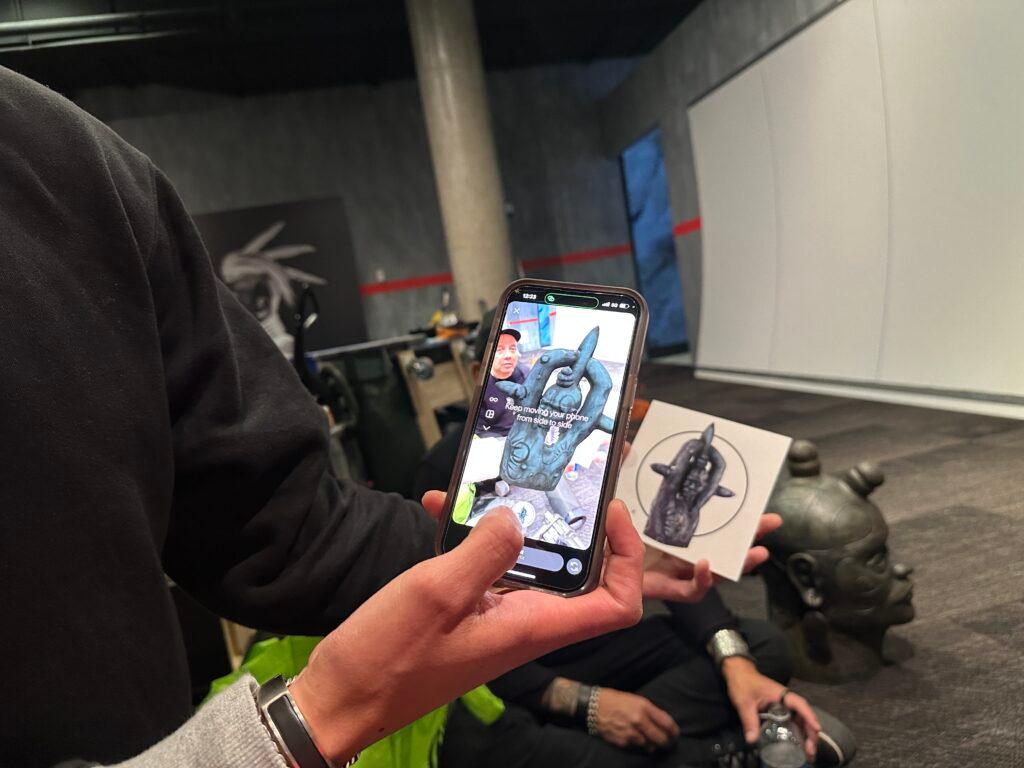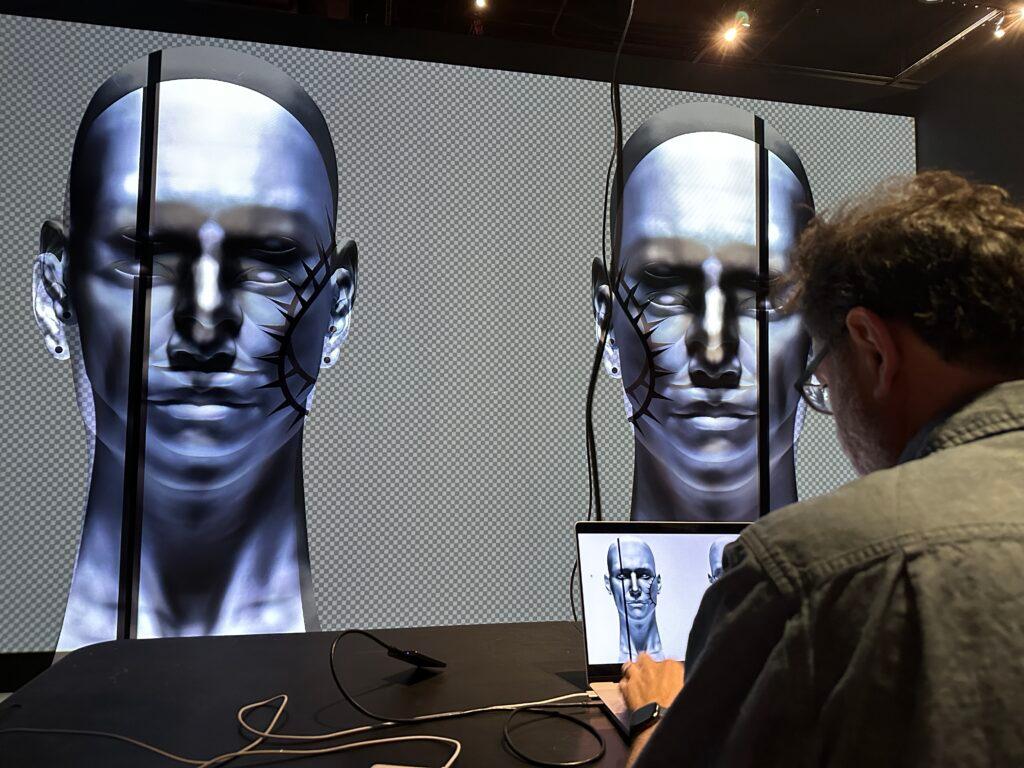
In 1680, a group of Indigenous people rose up against Spanish colonizers near Santa Fe, New Mexico. Now, History Colorado is debuting a new exhibit inspired by the 1680 Pueblo Revolt.
But the exhibit does much more than help viewers digest the past. In fact, it looks to Native people’s future — using science fiction and fantasy.
Virgil Ortiz is an award-winning artist from Cochiti Pueblo whose work appears in museums all over the world. The new exhibit, Virgil Ortiz Revolt 1680/2180: Runners + Gliders, uses projection mapping, augmented reality, centuries-old Cochiti sculptures, and ancestral Puebloan pottery from History Colorado’s collection. Ortiz uses the mix of old and new, future and history, to focus on the most successful Indigenous uprising against a colonizing power in North American history: the 1680 Pueblo Revolt. The uprising saw the Pueblos rebel against the Spanish invaders and the religious, economic, and political systems they imposed. Ortiz notes the history of the revolt isn’t taught in schools or recorded in many history books..
“I want people to acknowledge our history and what happened to our people, and how we persevered and we're still here — living, creating,“ Ortiz said.
Jeremy Morton, an exhibit developer and historian at History Colorado, said the museum is not just trying to preserve the past, but also explore new ways for visitors to experience and appreciate history.
“So when you look at Virgil's work, I think it sort of pairs perfectly with that mission, right? Where he's using art to communicate: a history mission,” Morton said.
The exhibit will mark the first time many of the artifacts, many from the 1800s, will be displayed.


“One of the coolest things about this exhibit is that it's essentially a conversation of a thousand years’ generations,” Morton said. “Of pottery that goes back over a thousand years on this side, the ancestral Puebloan pieces on this side, Virgil's sort of monumental contemporary pieces in the center, framed on the other side with the Cochiti Pueblo artifacts.”
The exhibition also uses elements of fantasy and science fiction to imagine an Indigenous future. Ortiz created a storyline and scripted elements happening in two different time dimensions.
“What the characters are doing, they're coming from 2180 to our present and historic times, and they're collecting shards,” Ortiz said. “They're collecting our artwork, our language, our songs, our ceremonies, taking them to 2180, storing them, protecting them so that when we get there, through the year 2180, all of our language, our songs, our artwork, our ways of life are still preserved and protected.”
Sebastian Bustos worked with Ortiz to develop the augmented reality components of the exhibit.
“You'll walk into the exhibit and take in what you see, what's really real there. And then you're gonna have a little indication, a little sign on the side that has a QR code. You'll pull out your phone, you'll scan the QR code and when you point it at it, it's gonna come to life. Whether it's, you know, sparks coming off, or flames kind of flying through the air and stuff like that,” Bustos said. “It's a super powerful exhibit, on its own.”
Ortiz said he hopes we learn from the past and avoid repeating it.

“But unfortunately it's like it's happening again. Lik,e for all different types of people that are trying to survive and, you know, like really working against different types of people,” Ortiz said. “Why is this happening when we already know, we've been through this before. So I just want people to acknowledge what has happened and to learn about our history. Learn about not only Pueblo people, but all indigenous people around America.”
Ortiz said that's like a prayer for the longevity of their artwork.
Morton says he hopes when people leave this exhibit they rethink what history can be and how history can be told.
“I think a lot of people when they think about history, they think about textbooks, they think about memorizing dates and, and names, and they don't realize that there's different sort of interesting, unique, cool ways to tell historic stories,” Morton said. “I hope they’re inspired to learn more about history.”
Virgil Ortiz Revolt 1680/2180: Runners + Gliders at the History Colorado Center in Downtown Denver is included with regular admission. The artist will speak at a reception at 6:00 p.m. on May 18.
Editor's Note: History Colorado is a financial supporter of CPR, but has no editorial influence.








